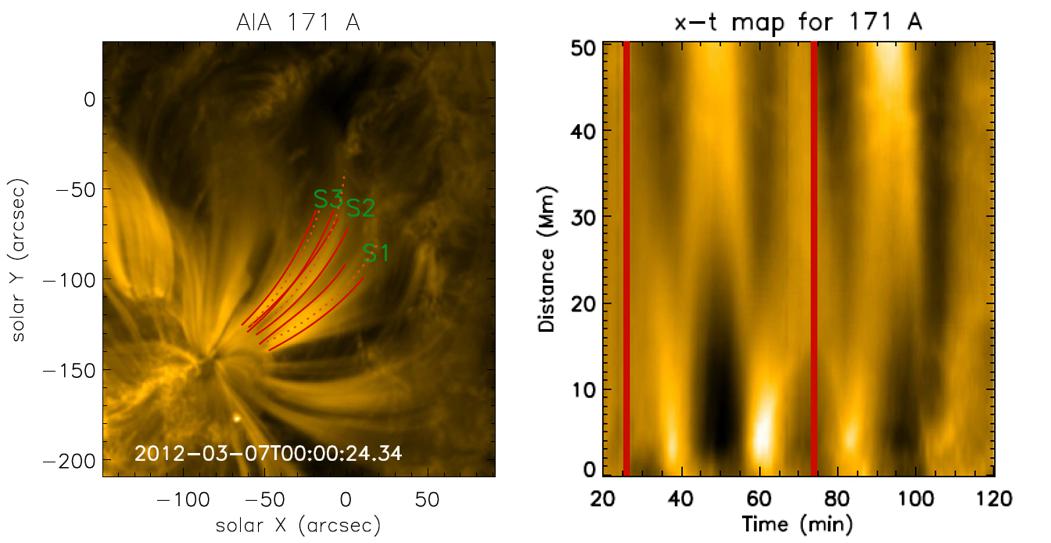New progress has been made in the study of coronal loop Oscillations-standing waves in semi-open coronal loops
The upper atmosphere of the sun is composed of a magnetic field and a thin plasma. The magnetic pressure of the magnetic field is dozens to thousands of times the plasma pressure. The large-scale coronal magnetic field is mainly divided into a closed coronal loop and a semi-open magnetic field (see Figure 1). Among them, the closed coronal loop connects the positive and negative magnetic poles on the surface of the sun, and it is filled with plasma with relatively uniform density and temperature; The semi-open magnetic field can extend from the surface of the sun to the interplanetary space, and the plasma can continuously leak out through the open magnetic field to form the solar wind.
Various waveguides dominated by magnetic fields are formed in the corona. The closed coronal loop can capture the energy in atmospheric motion and form a standing wave. There are two forms: lateral swing (standing wave dominated by magnetic field) and longitudinal gas wave (standing wave dominated by fluid, similar to sound waves). Dr. Yuan Ding from the Institute of Space Science and Applied Technology of our school established the standing wave model in the coronal loop and calculated the atomic emission spectrum, predicting that only imaging observations can effectively detect standing waves (Yuan et al 2015, ApJ 807,98). Recently, in cooperation with the Institute of Astrophysics, Bangalore, the Solar Dynamics Telescope (SDO) Atmospheric Imaging Array (AIA) was used to discover for the first time a standing wave similar to sound waves in the semi-open coronal ring (see Figure 2). The standing wave form is similar to the sounding principle of a flute. The standing wave is restrained by a semi-open waveguide, and the vibration frequency is controlled through a small hole to emit different tones. The result was published in the letter of the top international journal Astrophysical Journal (Pant, Tiwari, Yuan, Banerjee et al ApJL, 847, L5), and was reported by the new discovery letter of the American Astronomical Society (AAS).
Related articles:
Yuan et al 2015: http://iopscience.iop.org/article/10.1088/0004-637X/807/1/98
Pant et al 2017: http://iopscience.iop.org/article/10.3847/2041-8213/aa880f/meta
AAS Nova: http://aasnova.org/2017/09/18/featured-image-waves-in-a-coronal-fan/

Figure 1: Various closed and semi-open magnetic fields in the upper atmosphere of the sun.

Figure 2: Along the semi-open magnetic field lines, the evolution of the plasma disturbance to the density over time shows a standing wave form.
